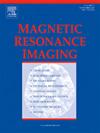纵向定量MRI在前列腺癌放射治疗后与不雄激素剥夺治疗
IF 2
4区 医学
Q2 RADIOLOGY, NUCLEAR MEDICINE & MEDICAL IMAGING
引用次数: 0
摘要
背景和目的在明确放射治疗(RT)后早期发现局部复发的前列腺癌(PCa)提供了提供靶向挽救治疗的机会,从而降低疾病进展的风险。定量MRI (qMRI)参数有望作为早期发现局部复发的成像生物标志物。然而,在接受RT联合雄激素剥夺治疗(ADT)的患者中,使用qMRI监测反应的可行性仍不确定。在这里,我们确定了qMRI参数有可能可靠地检测PCa的RT后反应,并比较了接受RT联合ADT与单独接受RT的患者的反应。材料和方法:对16例局部PCa患者进行标准明确放射治疗前、6个月、12个月和18个月的mri扫描。接受新辅助ADT的患者也在ADT前进行扫描。计算各成像时间点肿瘤内ADC、D、f、HS、R2*、T1、Ktrans、ve的平均值。采用rANOVA和事后双尾t检验评估治疗相关变化的统计学意义。相对于基线扫描的变化超过参数不确定度被归类为“可检测”。结果无论是否使用ADT, rt后18个月测量的sktrans和HS是检测治疗反应最可靠的。在其他qMRI参数中观察到显著的治疗后变化,但由于测量不确定度大而不可靠。结论定量MRI有望在放疗后18个月内可靠地检测治疗反应。未来的临床试验应该通过将这些参数与治疗结果相关联来验证Ktrans和HS的潜力。本文章由计算机程序翻译,如有差异,请以英文原文为准。
Longitudinal quantitative MRI in prostate cancer after radiation therapy with and without androgen deprivation therapy
Background and purpose
Early detection of locally recurring prostate cancer (PCa) after definitive radiation therapy (RT) offers the opportunity to deliver targeted salvage therapies, thereby reducing the risk of disease progression. Quantitative MRI (qMRI) parameters show promise as imaging biomarkers for early detection of local recurrence. However, the feasibility of using qMRI for response monitoring in patients undergoing RT combined with androgen deprivation therapy (ADT) remains uncertain. Here, we identified the qMRI parameters with potential to reliably detect post-RT response in PCa and compared the response in patients receiving RT combined with ADT versus those receiving RT alone.
Materials and methods
qMRI scans were acquired before and at 6-, 12-, and 18-months after standard definitive RT in sixteen patients with localised PCa. Patients undergoing neoadjuvant ADT were also scanned pre-ADT. Mean value of ADC, D, f, HS, R2*, T1, Ktrans, ve within the tumour were calculated at each imaging timepoint. Statistical significance of treatment-related changes was assessed using rANOVA and post hoc two-tailed t-test. Changes relative to the baseline scan exceeding the parameter uncertainty were classified as “detectable”.
Results
Ktrans and HS measured at 18-months post-RT were found to be most reliable for detecting treatment response regardless of ADT use. Significant post-treatment changes were observed in other qMRI parameters but were unreliable due to large measurement uncertainties.
Conclusions
Quantitative MRI show promise for reliably detecting treatment response within 18-months post-RT. Future clinical trials should validate the potential of Ktrans and HS by correlating these parameters with treatment outcomes.
求助全文
通过发布文献求助,成功后即可免费获取论文全文。
去求助
来源期刊

Magnetic resonance imaging
医学-核医学
CiteScore
4.70
自引率
4.00%
发文量
194
审稿时长
83 days
期刊介绍:
Magnetic Resonance Imaging (MRI) is the first international multidisciplinary journal encompassing physical, life, and clinical science investigations as they relate to the development and use of magnetic resonance imaging. MRI is dedicated to both basic research, technological innovation and applications, providing a single forum for communication among radiologists, physicists, chemists, biochemists, biologists, engineers, internists, pathologists, physiologists, computer scientists, and mathematicians.
 求助内容:
求助内容: 应助结果提醒方式:
应助结果提醒方式:


